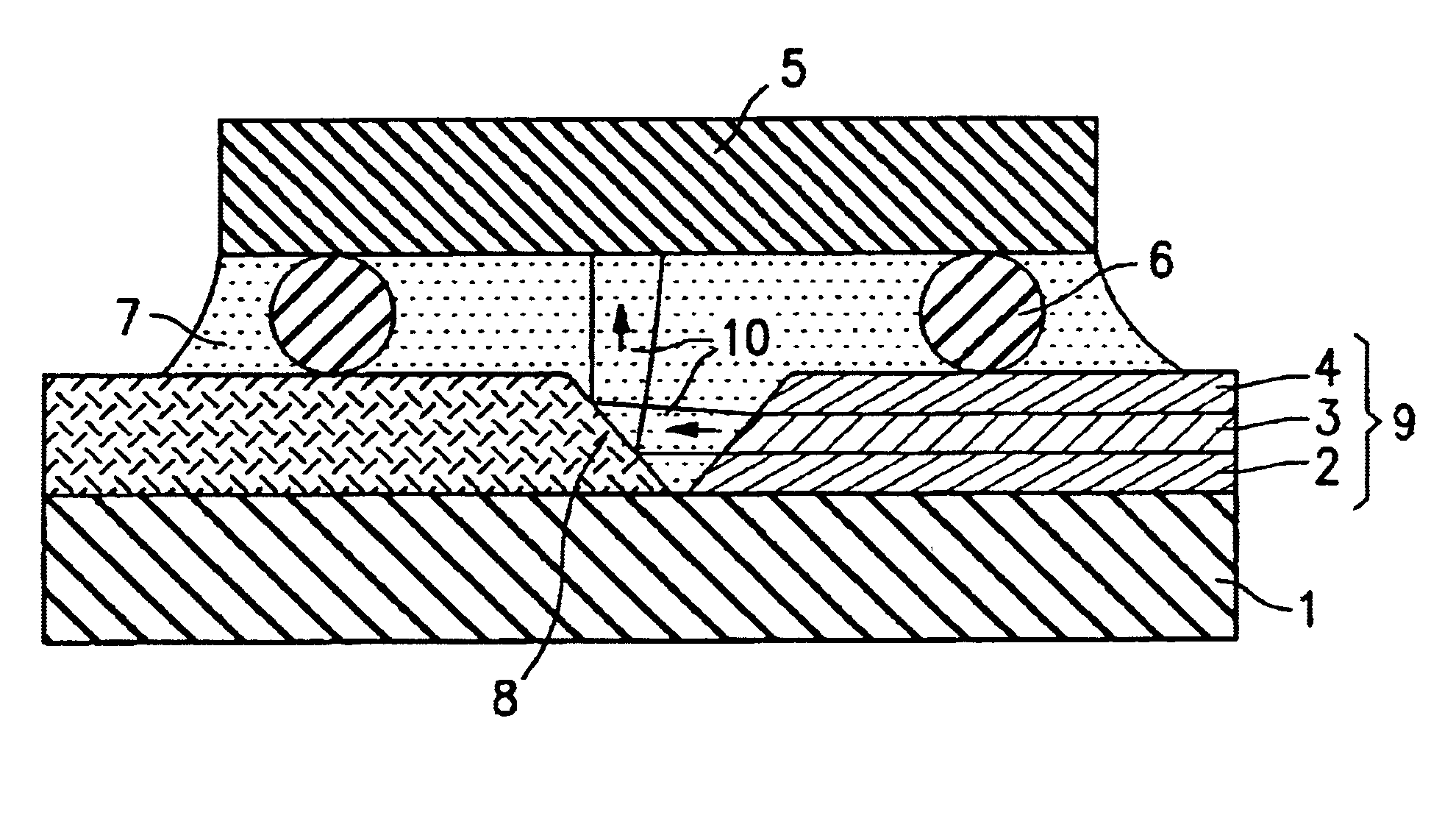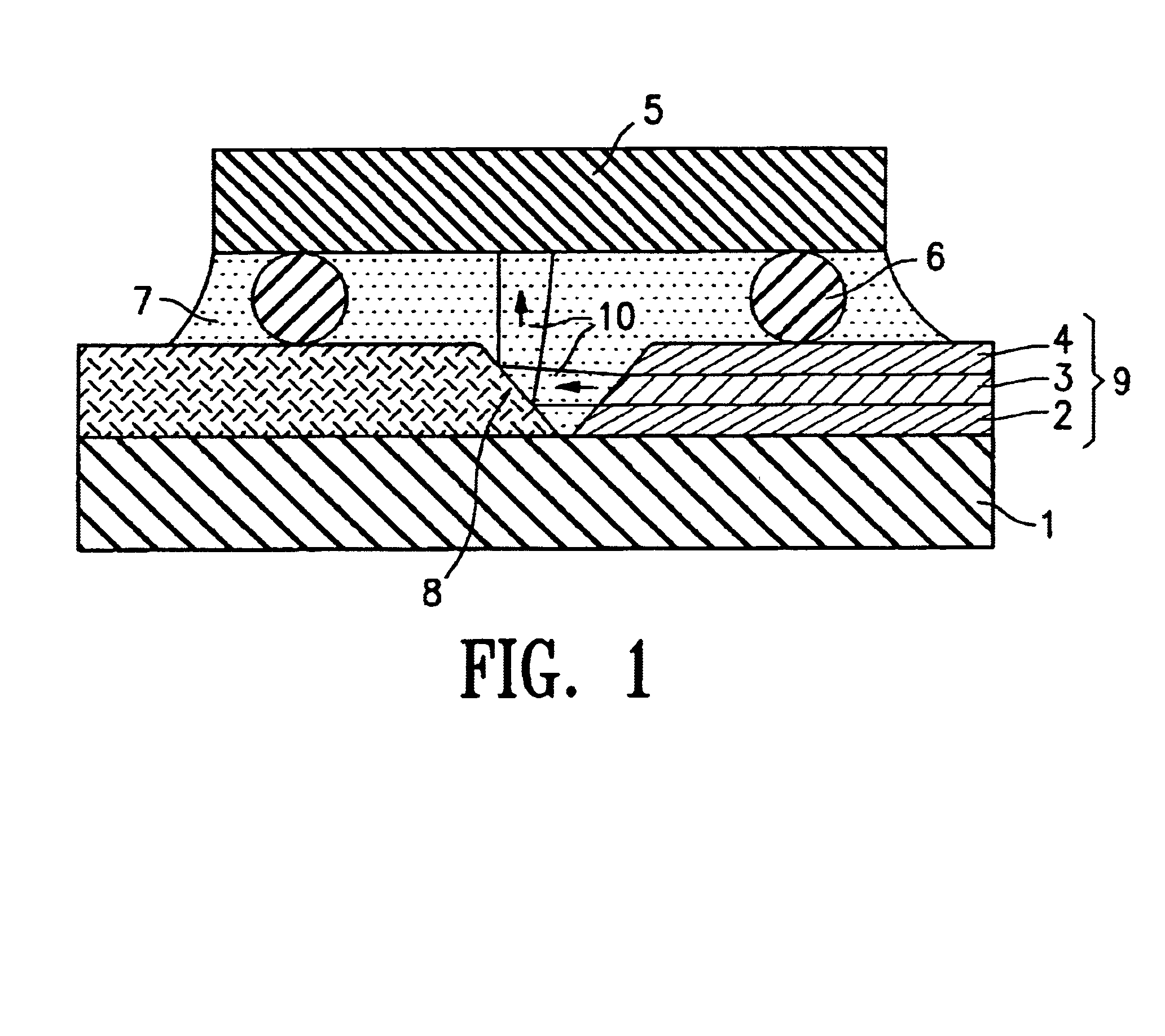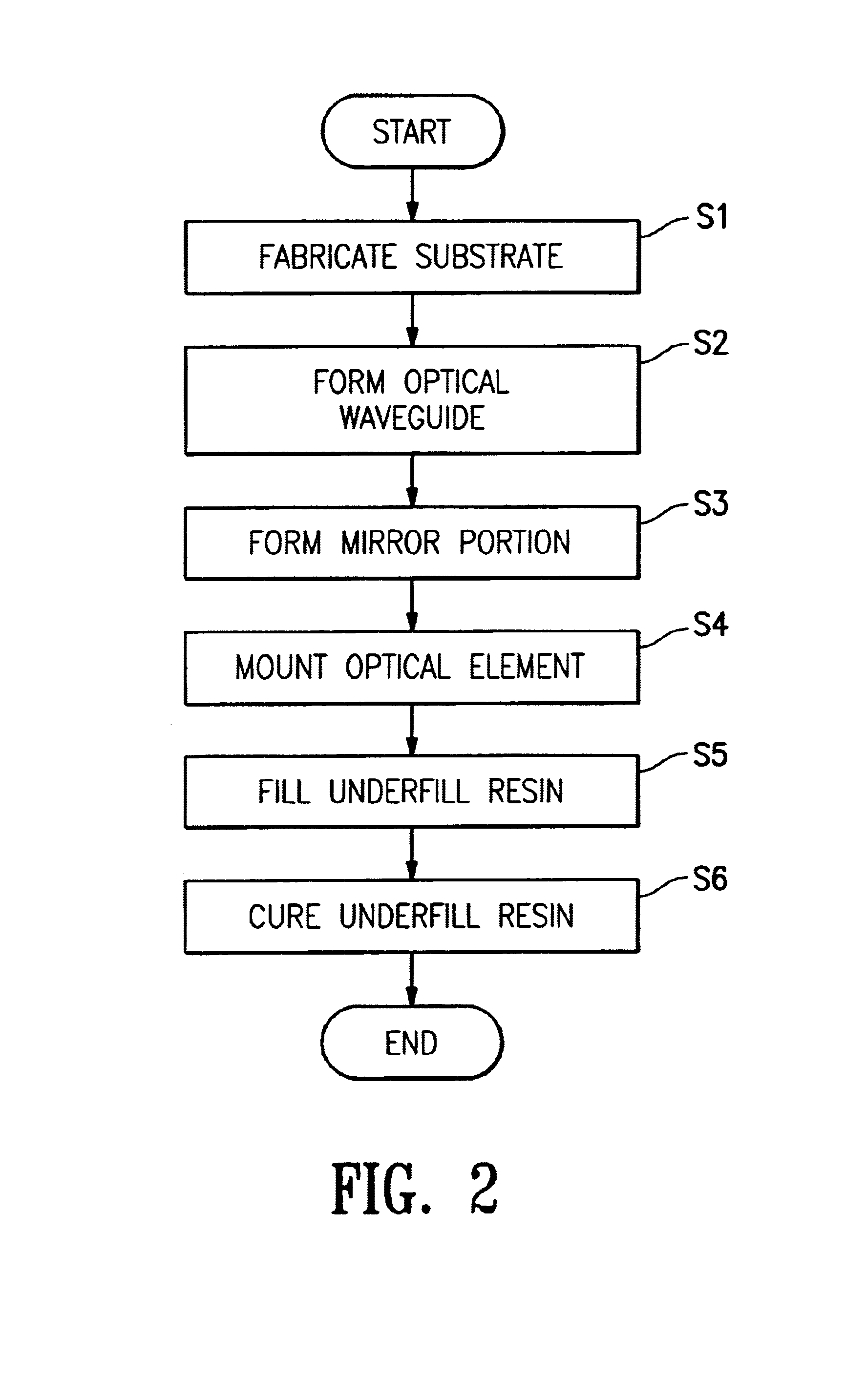Optical module and method for manufacturing same
a technology of optical modules and underfill resins, applied in the field of optical modules, can solve the problems of inconvenient leakage of underfill resins arranged on the outer side of the clad portion, affecting the establishment of optical connections, and unable to achieve proper light transmission
- Summary
- Abstract
- Description
- Claims
- Application Information
AI Technical Summary
Benefits of technology
Problems solved by technology
Method used
Image
Examples
Embodiment Construction
Next, with reference to FIG. 2, a specific example of the optical module embodying the invention will be described.
Firstly, at step S1, onto an alumina substrate are formed an electric wiring layer made of 2 .mu.m-thick Cu and a mounting pad used for placement of a conductor bump required to flip-chip mount an optical element 5, whereby an electric wiring substrate 1 is fabricated. The pad portion is plated with N1, then follow with 1 .mu.m-thick Au as the topmost coat.
At step S2, the substrate 1 is spin-coated with an organic solvent solution of siloxane polymer, and is then heat-treated at 85.degree. C. for 30 minutes and at 150.degree. C. for 30 minutes, whereby a 12 .mu.m-thick clad portion 2 (refractive index =1.4405 at .lambda.=1.3 .mu.m) is formed.
Then, the clad portion 2 is spin-coated with a mixed solution of siloxane polymer and tetra-n-butoxytitanium, and is then heat-treated at 85.degree. C. for 30 minutes and at 150.degree. C. for 30 minutes, whereby a 7 .mu.m-thick cor...
PUM
 Login to View More
Login to View More Abstract
Description
Claims
Application Information
 Login to View More
Login to View More - R&D
- Intellectual Property
- Life Sciences
- Materials
- Tech Scout
- Unparalleled Data Quality
- Higher Quality Content
- 60% Fewer Hallucinations
Browse by: Latest US Patents, China's latest patents, Technical Efficacy Thesaurus, Application Domain, Technology Topic, Popular Technical Reports.
© 2025 PatSnap. All rights reserved.Legal|Privacy policy|Modern Slavery Act Transparency Statement|Sitemap|About US| Contact US: help@patsnap.com



